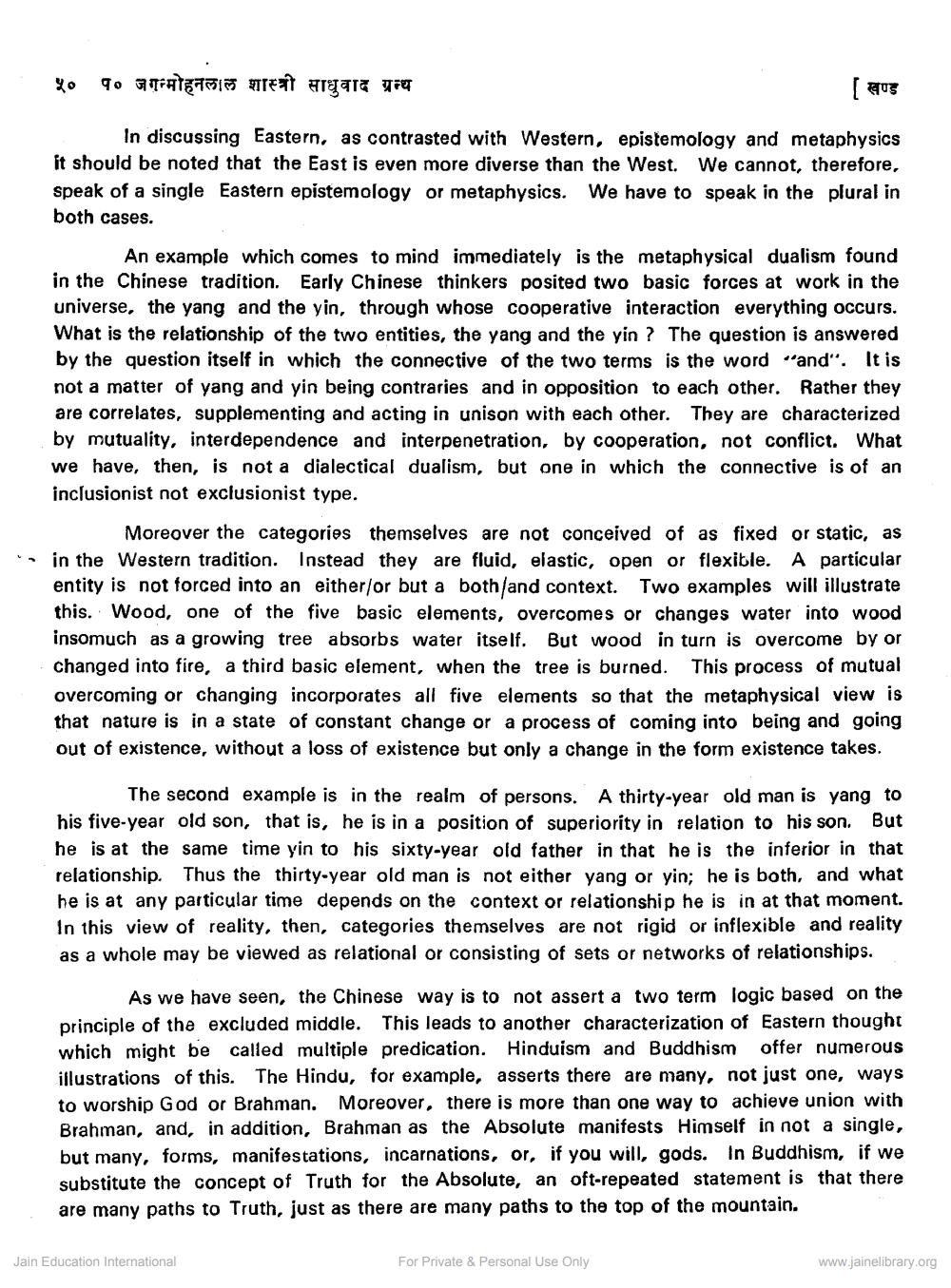________________
५० प. जगन्मोहनलाल शास्त्री साधुवाद ग्रन्थ
[ 2003
In discussing Eastern, as contrasted with Western, epistemology and metaphysics it should be noted that the East is even more diverse than the West. We cannot, therefore, Speak of a single Eastern epistemology or metaphysics. We have to speak in the plural in both cases.
An example which comes to mind immediately is the metaphysical dualism found in the Chinese tradition. Early Chinese thinkers posited two basic forces at work in the universe, the yang and the yin, through whose cooperative interaction everything occurs. What is the relationship of the two entities, the yang and the yin? The question is answered by the question itself in which the connective of the two terms is the word "and". It is not a matter of yang and yin being contraries and in opposition to each other. Rather they are correlates, supplementing and acting in unison with each other. They are characterized by mutuality, interdependence and interpenetration, by cooperation, not conflict. What we have, then, is not a dialectical dualism, but one in which the connective is of an inclusionist not exclusionist type.
Moreover the categories themselves are not conceived of as fixed or static, as in the Western tradition. Instead they are fluid, elastic, open or flexible. A particular entity is not forced into an either/or but a both and context. Two examples will illustrate this. Wood, one of the five basic elements, overcomes or changes water into wood insomuch as a growing tree absorbs water itself. But wood in turn is overcome by or changed into fire, a third basic element, when the tree is burned. This process of mutual overcoming or changing incorporates all five elements so that the metaphysical view is that nature is in a state of constant change or a process of coming into being and going out of existence, without a loss of existence but only a change in the form existence takes.
The second example is in the realm of persons. A thirty-year old man is yang to his five-year old son, that is, he is in a position of superiority in relation to his son. But he is at the same time yin to his sixty-year old father in that he is the inferior in that relationship. Thus the thirty-year old man is not either yang or yin; he is both, and what he is at any particular time depends on the context or relationship he is in at that moment. In this view of reality, then, categories themselves are not rigid or inflexible and reality as a whole may be viewed as relational or consisting of sets or networks of relationships.
As we have seen, the Chinese way is to not assert a two term logic based on the principle of the excluded middle. This leads to another characterization of Eastern thought which might be called multiple predication. Hinduism and Buddhism offer numerous illustrations of this. The Hindu, for example, asserts there are many, not just one, ways to worship God or Brahman. Moreover, there is more than one way to achieve union with Brahman, and, in addition, Brahman as the Absolute manifests Himself in not a single, but many, forms, manifestations, incarnations, or, if you will, gods. In Buddhism, if we substitute the concept of Truth for the Absolute, an oft-repeated statement is that there are many paths to Truth, just as there are many paths to the top of the mountain.
Jain Education International
For Private & Personal Use Only
www.jainelibrary.org




